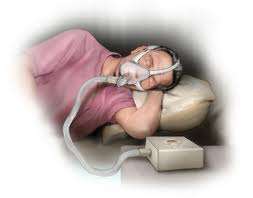Asthma Treatment using Salbutamol and Mahuang
When salbutamol is given to an asthmatic patient, the ratio of unchanged drug to metabolite in the urine after an oral dose is 1:2. Ritter et al go on to explain the pharmacokinetics of salbutamol.4 It undergoes pronounced presystemic metabolism in the intestinal mucosa and hepatic conjugation to from an inactive metabolite that is then excreted in the urine. Up to 80% of the aerosol-administered drug is actually swallowed, whist the remaining 10-20% remains as a free drug within the airways. The plasma elimination half-life is between 2 – 4 hours.
Henry shows how particular areas of the population need to vary their dosage: Infants and children should take a reduced dose along with patients over the age of 60.5 It can be passed by breast-feeding to an infant but does not pose any risk. Pregnant women have no adverse reaction. For the general population, its overdose danger rating and dependency is low. It has little stimulant effect upon the heart rate and blood pressure so making it safe for patients with heart problems or high blood pressure.
Adverse reactions to salbutamol include:
- Fine skeletal muscle tremors,
- Hypertension,
- Vasodilation of blood vessels to skeletal muscle,
- Palpitations,
- Excitability,
- Hypokalaemia, and
- Tachycardia.
These adverse reactions are caused by salbutamol attaching to β-adrenoreceptors located in the heart, lungs and muscles. This is also the receptor site for epinephrine, thus any antagonist action by salbutamol will inhibit epinephrine action. This will lead to a decrease in cardiac output and metabolic rate.
Ma Huang
In the paradigm of Traditional Chinese Medical (TCM), Lung Qi deficiency and Wei Qi (defensive) deficiency can cause asthma. Unless these deficiencies are corrected, external pathogenic factors such as Wind, Heat, Cold, Damp, etc, can enter the body and disrupt Qi flow. Ma Huang facilitates Lung Qi flow and controls wheezing due to obstruction of Lung Qi by Wind and Cold. Ma Huang induces Lung Qi to flow more easily and causes it to descend, thereby stopping cough, reducing respiratory difficulty, and aiding the function of the Kidney in grasping Lung Qi.6 In TCM, failure of Kidney to grasp Lung Qi is another cause of asthma; if Lung Qi fails to descend, Kidney Qi cannot grasp it. Therefore, the effect of Ma Huang in facilitating Lung Qi to descent also benefits asthma caused by the failure of Kidney Qi to grasp Lung Qi. Ma Huang (figure 2) is the Chinese herbal equivalent to salbutamol. It can only be administered orally, within a mixed herbal formula, either in an herbal tea or tablet form. Ephedra sinica spp. are native to China, but other species grow in other Asian countries. The usual adult dose of Ma Huang is 3-10 g/day.
Figure 2. Ma Huang (Ephedra Sinica)11
Ma Huang can be decocted with Xing Ren (Semen Pruni Armeniacae), Shu Di Huang (Radix Rehmanniae Glutinosae) and Shi Gao (Gypsum) to reinforce the effect of calming asthma, or Feng Mi (honey) to reduce its adverse effects.
As Tang and Eisenbrand stated, the structural elements of Ma Huang vary depending upon its origin.7 Bensky et al list the main ingredients as ephedrine, pseudoephedrine, 1-N-methylephedrine, ephedrine, 1-norephedrine, d-N-pseudomethylephedrine, d-dimethylpseudoephedrine, benzyl-methylamine and 1-alpha-d-terpineol. Ephedrine is the main bronchodilatory agent in Ma Huang. From the native species of China, about 1% total alkaloid containing 63%-80% ephedrine and 20%-34% pseudoephedrine can be found.
Keys states that ephedrine dilates the bronchi, stimulates the respiratory centre and acts to prevent bronchial asthma.8 Its vasoconstrictive action shrinks congested mucous membranes. Structurally, ephedrine is very similar to epinephrine; it triggers the release of endogenous catecholamines from the post-ganglionic sympathetic fibres. It is absorbed well and is highly lipophilihc, it crosses the blood-brain barrier but its persistence is longer than that of epinephrine.9 Precautions should be taken for patients with prostatic hypertrophy, cardiac insufficiency and diabetes.
Tang et al reported an excretion rate of a typical oral dose of (-)-ephedrine of 88% in the first 24 hours and 97% within 48 hours; 53-74% of the drug was excreted unchanged, with N-demethylation to norephedrine occurring variably (8-20%).
As Bruneton mentions, excessive ephedrine use (as little as 15 ml of 1% solution) can induce spontaneous recovery from the common cold. However, possible side effects include dryness of the mouth, insomnia, sweating and anxiety. More seriously, it can cause psychic and cardiac alterations.
Other adverse affects include:
- Palpitations
- Hypertension
- Increased blood pressure
- Stimulated cerebral cortex resulting in nervous excitability
- Insomnia and
- Diuresis
At high dose rates, and in sensitive subjects. ephedrine, the most active compound in Ma Huang, can cause adverse effects, especially palpitations, hypertension and excitability. Salbutamol, even at standard dose rates can cause similar adverse effects, but for a shorter time, because ephedrine persists longer in body fluids than epinephrine does.
Conclusion
The levels of active compounds in herbs vary widely. Variations in the levels of active compounds in Ephedra plants from different regions in Asia, harvested at different times and prepared in different ways ultimately impact on their therapeutic vs. toxic effects. Also it is very important point to note that Mahuang has many different compounds. Therefore, it can be difficult to distinguish and isolate all of the physiologically therapeutic compounds. As Gerber noted, a patient could fail to show therapeutic benefits had they ingested the original Ma Huang plant instead.10
Since Ma Huang and salbutamol both act as antagonists on epinephrine receptors, their dual administration to a patient will induce a synergistic response or a higher rate of adverse reactions. These would probably include palpitations, hypertension or even cardiac failure. Also, possible down-regulation would occur as one or both drugs are withdrawn from treatment.
Unfortunately, this paper cannot address all the possible adverse or therapeutic effects of simultaneous use of Mahuang and salbutamol because there has been no critical research into these possible scenarios. It is extremely important to understand the inter-relationships that might occur in an effort to balance a patient’s therapeutic vs. toxic effects, as an increasing number of patients are now using TCM in conjunction with Western medicine.
To conclude, it is crucial that further research is conducted to understand the possible abnormal interactions and benefits between salbutamol and Ma Huang.
Attilio D’ Alberto,
Doctor of Chinese Medicine (Beijing, China), BSc (Hons) TCM MATCM
http://www.attiliodalberto.com/contact.htm
Πηγή:http://www.acupuncture.gr





